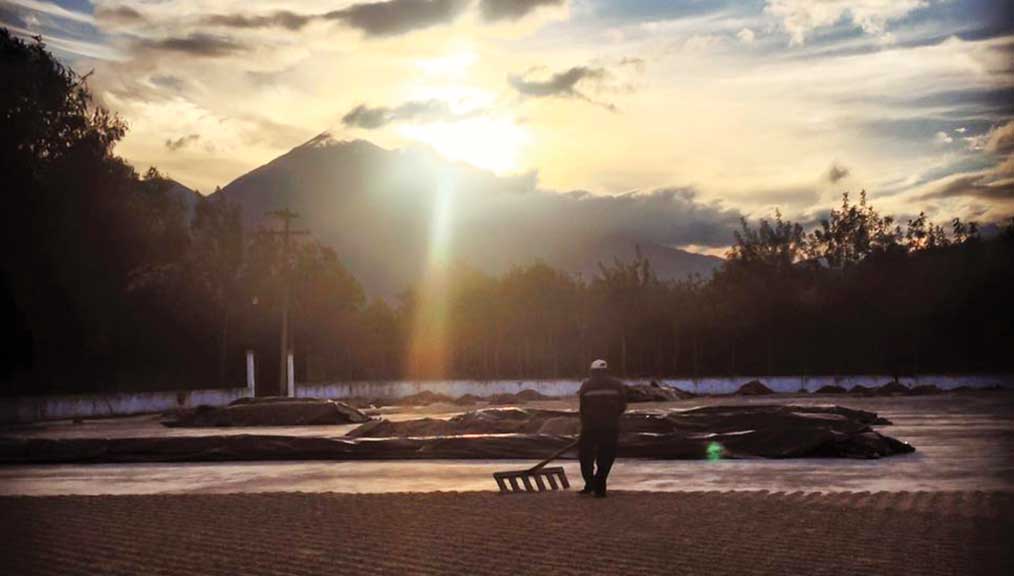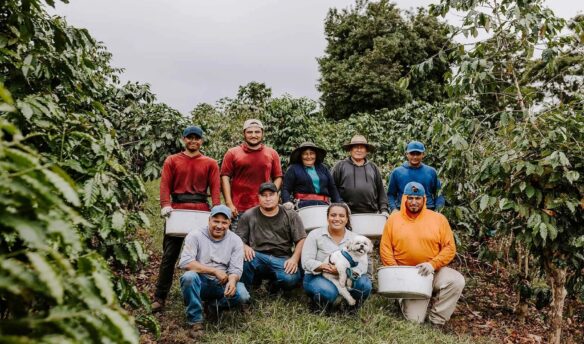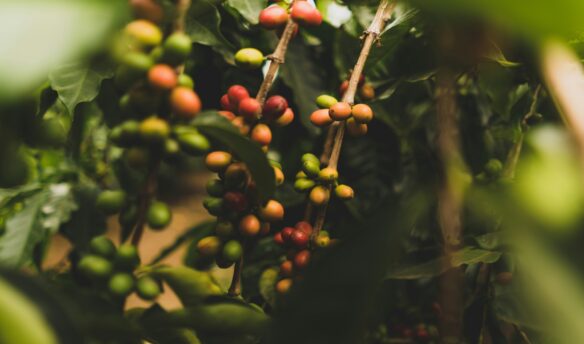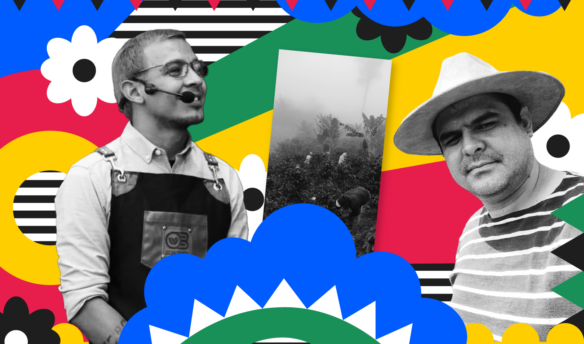This story has been translated into Spanish. Read it here.
[F]our years ago, we experienced a puzzling challenge at our farms in Guatemala, a challenge faced industry-wide, yet without remedy. Our beautiful, high-scoring, high-grown coffees started fading drastically and tasting stale, old, baggy, and tired—after only a matter of months. We couldn’t understand what was going on or why. If only the most perfect cherries were picked at the height of ripeness and processed with all the care and time in the world, what went wrong? Seeking an answer to this question led me to exhaustive research over the following years to better understand a phenomenon I define as the premature aging of coffee.
The Case
A) The bean presents a very short life cycle in green, between six and eight months before undergoing drastic changes: the bean’s appearance becomes pale and white, and presents flavors which are not associated with old coffee, but rather with a cardboard taste (baggy, ashy, peanut) in which acidity and complexity have faded almost completely.
B) The beans show a significant loss in density, reflected in density and moisture readings, but also in the way the bean is roasted (requiring significant temperature adjustments).
Initial Theories from 2013
1) The plant cell walls of the green beans are rupturing, resulting in premature aging of the coffee, density loss, and pale color. These are the consequence of other factors, such as the coffee being dried too fast and too far below the required humidity percentage, not allowing for the water activity to settle at a more appropriate rate and to more efficiently distribute within the bean.
2) Climate changes (drought and an extremely variable rainy season), abusive use of fertilization, and irregular temperature cycles in the atmosphere and in farm conditions related to shade have created variables in which the cherry is maturing too soon but the bean is not developing.
3) Lack of proper nutrition and excess fertilization, particularly fertilization of the leaves (foliar), which results in plant intoxication.
The cases I’ve seen are mostly in high-grown coffee, particularly those harvested in March and April (these were higher lots from farms not used to dealing with pests, and who were changing their fertilization programs in response). I’ve seen cases both in conventional and organic-certified coffees.
Current Views in 2017
After the phenomena became widespread, I remained in Guatemala as much as possible, and during the following four harvests I traveled to the farthest corners of the country’s producing regions to understand the reasons for the behavior in our coffee. I also consulted and visited with producers in other countries facing the exact same problem.
In one way or another, all the aspects outlined in my initial theories are correct, to some extent. All of the aforementioned factors play an important, simultaneous role in the premature aging of coffee.

There has been a significant shift in rainfall patterns in producing areas. Rainfall on the macro level has remained constant in quantity, yet not in its expected timing. First rains usually come in May, and the rainy season settles between the end of July and the beginning of October.
Yet, out-of-season rains are determining the flowering patterns of coffee. With initial rains now falling in January and February, there is an out-of-season flowering that, as a rule, will result in coffee harvest eight to nine months later. An additional shower at the end of April and mid-May will trigger a new flowering—no longer the historical main flowering, but a diminished version of the same. The traditional formal flowering of spring that would often result in the famous best coffees of the “third picking” is no longer a reality.
Then we have the massive problem of drought during the off season, the period in which fertilizers are applied and critical nutrition is absorbed by the growing beans. We are counting on rainfall to activate the components on these fertilizers to reach the plant, yet these remain on the hot ground, often lost due to evaporation. The opportunity to feed the plant and give density to the beans is lost during the entire critical part of the bean’s growth cycle.
Rain that triggers the bean’s final nutrition is falling out of season as well, during October and November, months in which we don’t historically experience rain. When the rains do come, what is found on the ground is often the fertilizer that didn’t evaporate with the sun, formulas that contain higher doses of elements needed at the final stage of bean formation for cherry maturation (rich in nitrogen, phosphorus, and potassium). The result is an accelerated final ripening of the cherry and not necessarily the final bean growth.

The cumulative result of these factors is an out-of-season harvest in which the peak of production (at altitude) is experienced in December, rather than March. Yet the plant is still bearing at that point, the production triggered by April and May flowerings that won’t ripen until February or March when the plant is already exhausted, often bearing new fruit because another cycle of out-of-season rains. The final picking—if not sacrificed and picked green to prevent additional stress on the plant—often lacks all necessary elements of nutrition.
All said, this is unique to regions with specific micro-climates in the central area of Guatemala. Yet other producing regions are experiencing similar challenges but at different times, with out-of-season harvests in April, May, even up to June.
Four harvests later I revisit my original theories and the first documents I wrote on the matter; fortunately my observations are more optimistic now, but might be even more difficult for the producing community to accept. The most complicated variables facing the future of coffee quality are culture, neglect, and the resistance to change.
The plants are full on with the program of adapting to new climate conditions, yet we as an industry are the ones who have been slow to accept that our preconceived ideas on when and how quality is happening is not a constant anymore. Not in the way and time coffee is being produced, or in the way and time these coffees are being placed on rotation to roast.
More to come.
—Josué Morales is master roaster and cupper at Mayaland Coffee and TG-LAB based in Guatemala City, Guatemala.
















